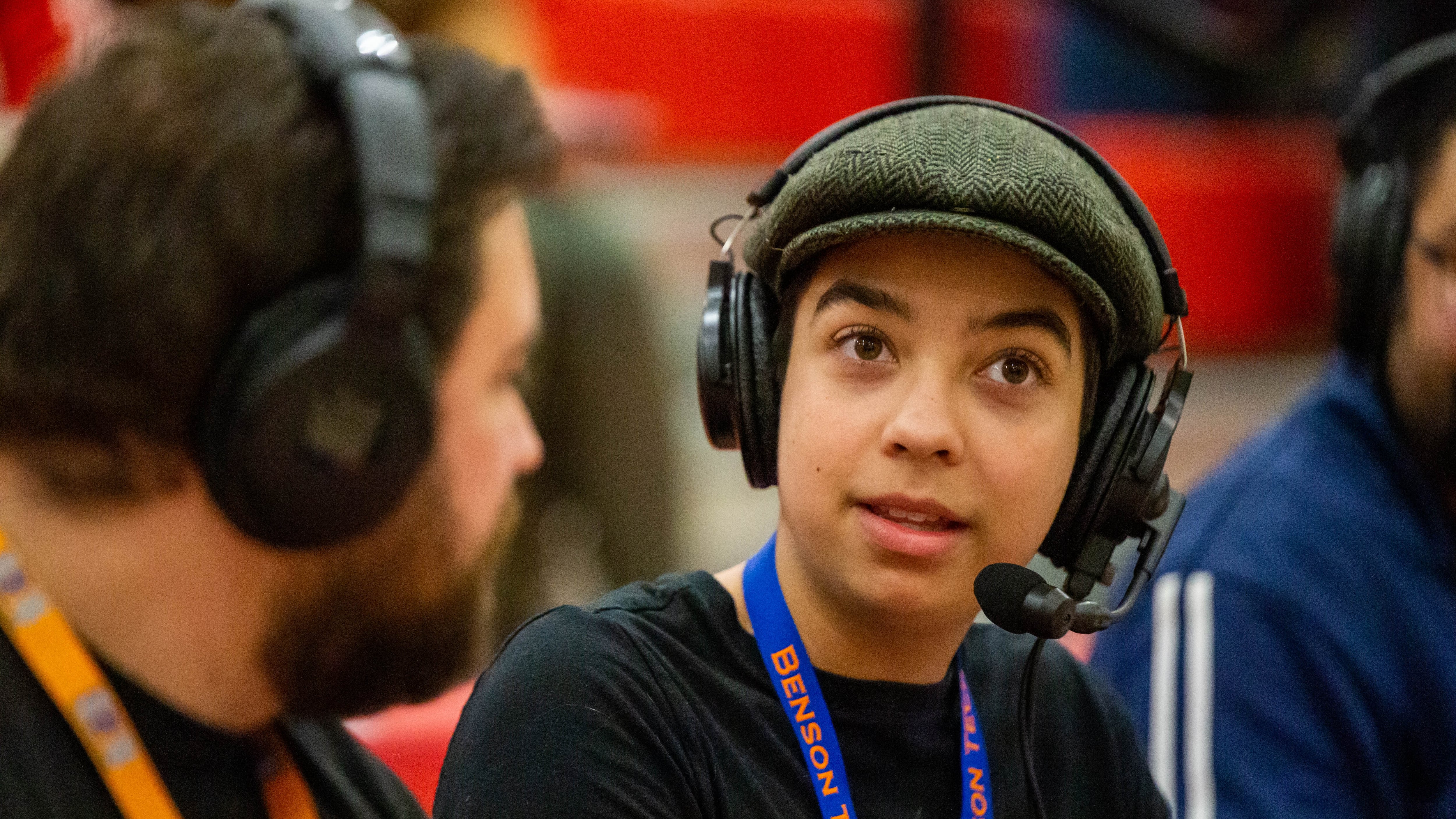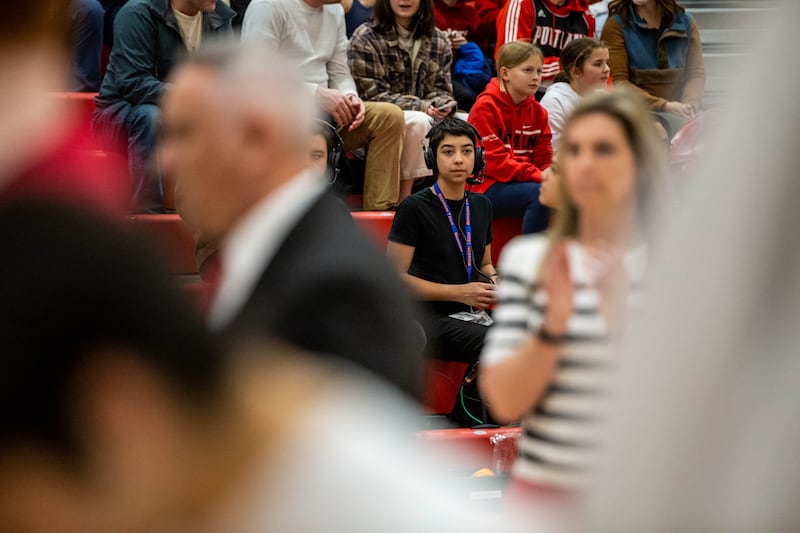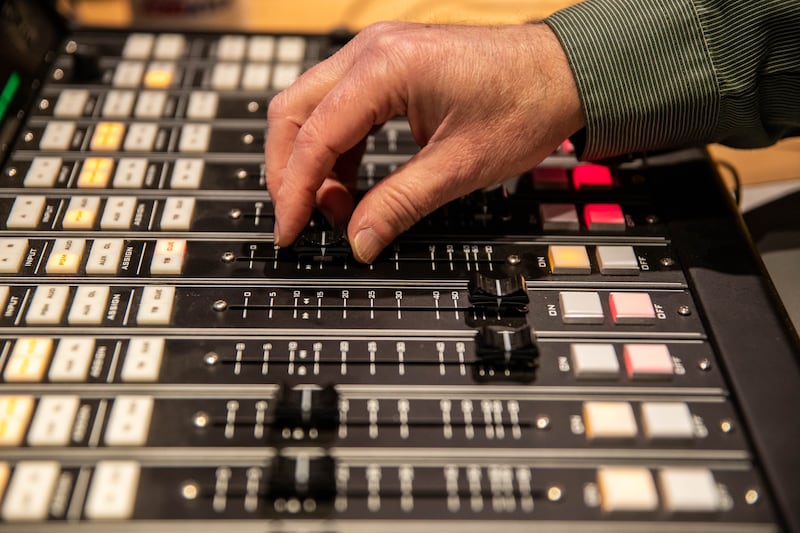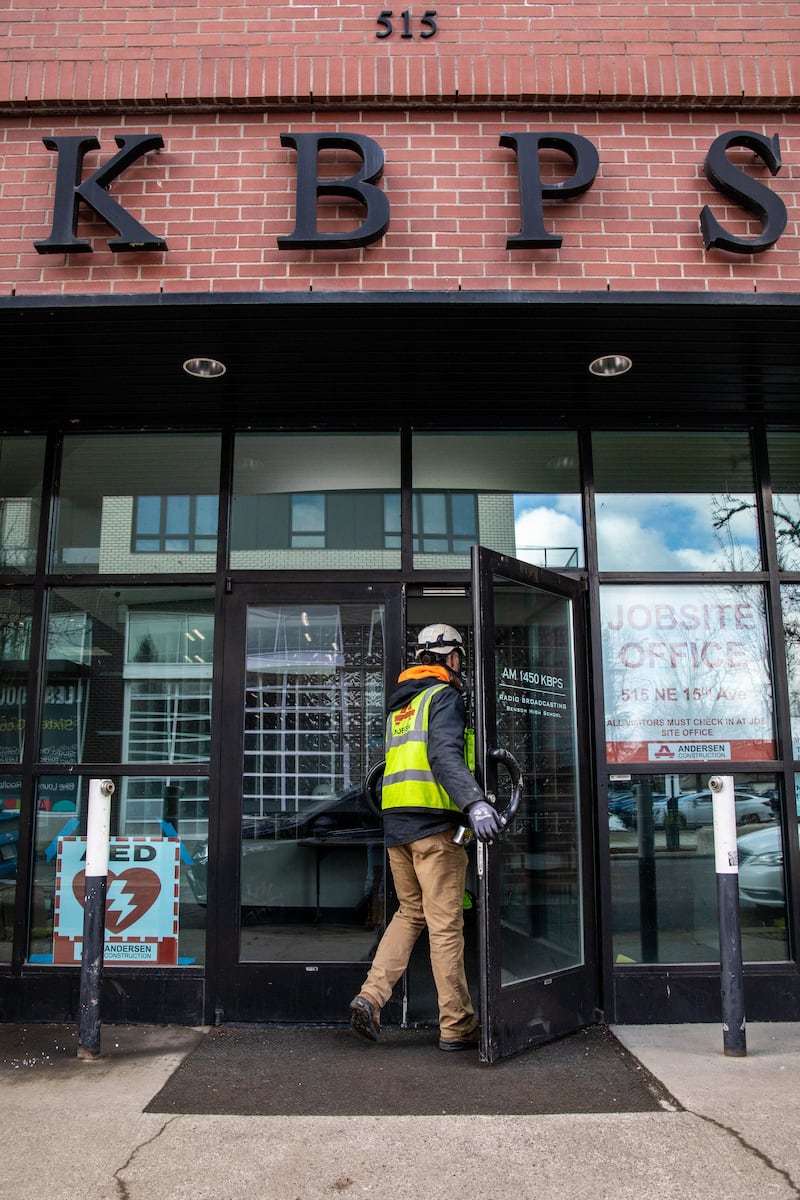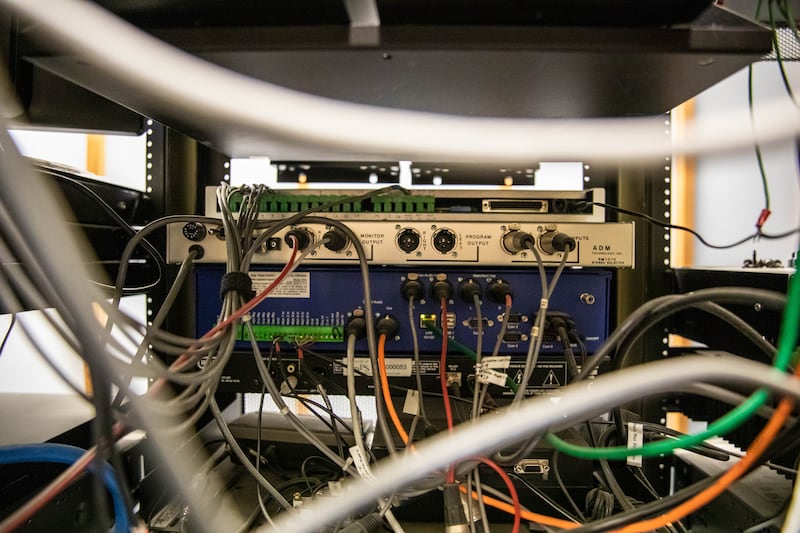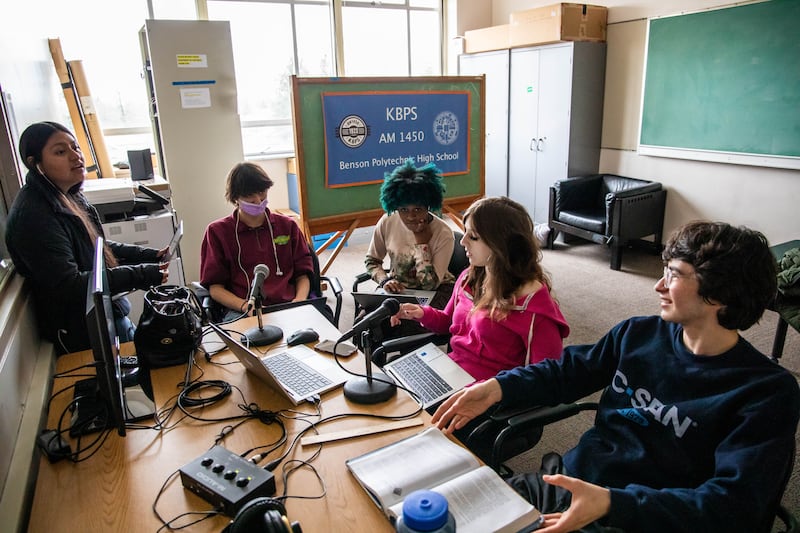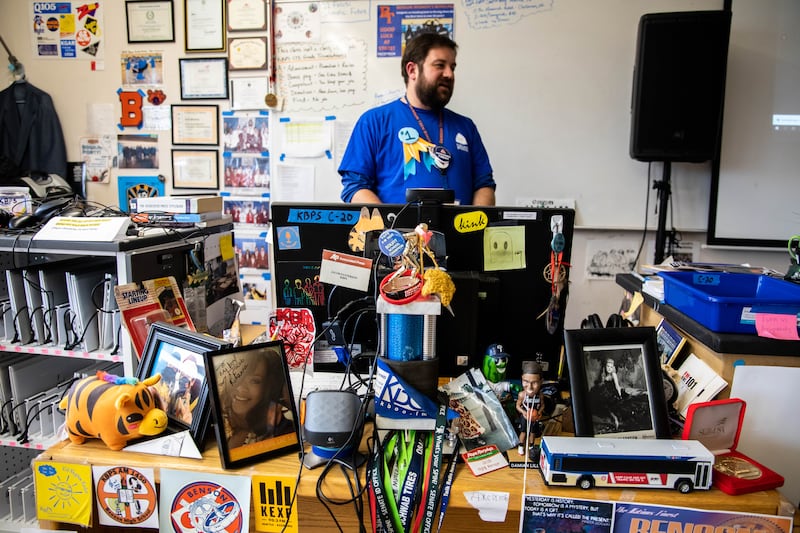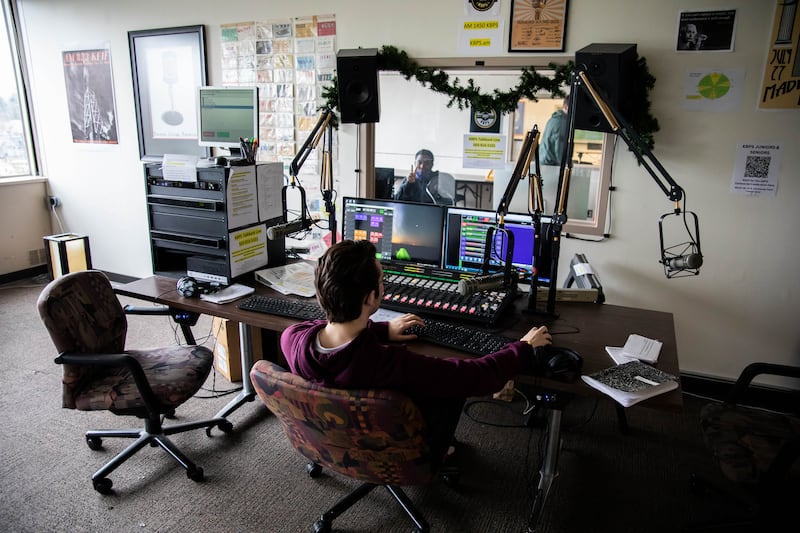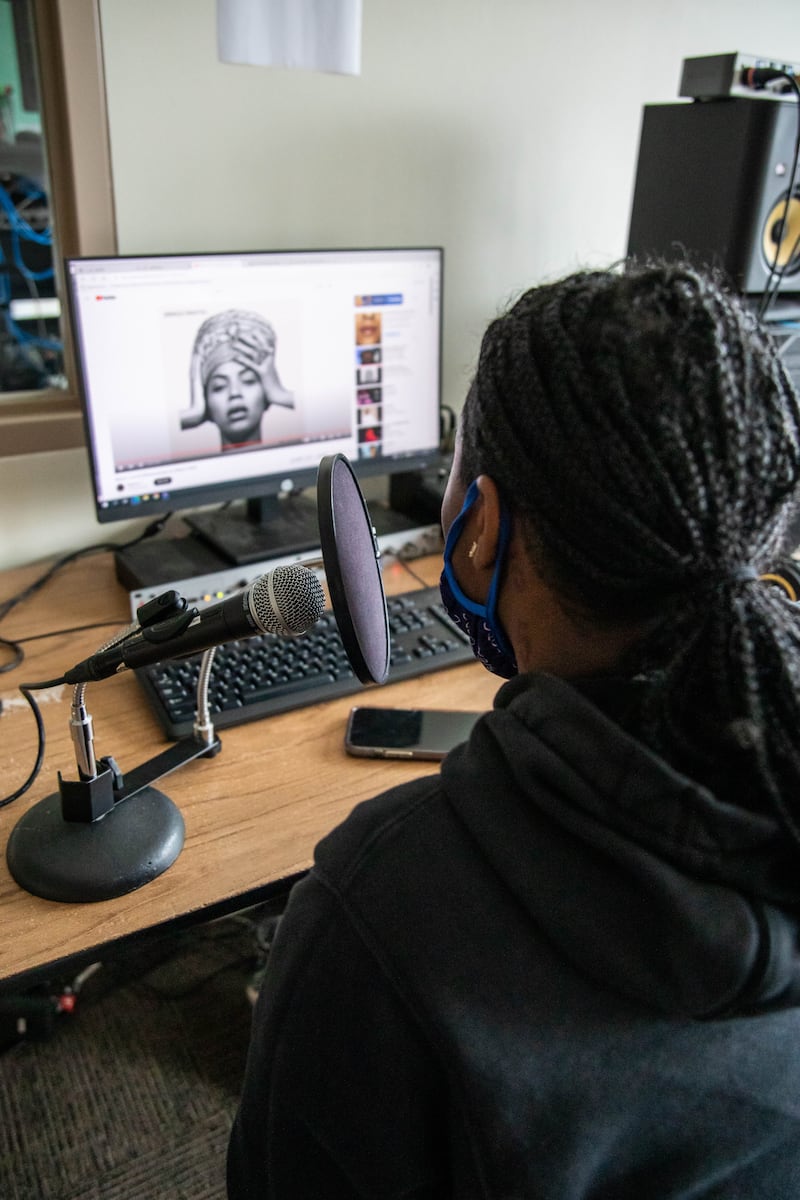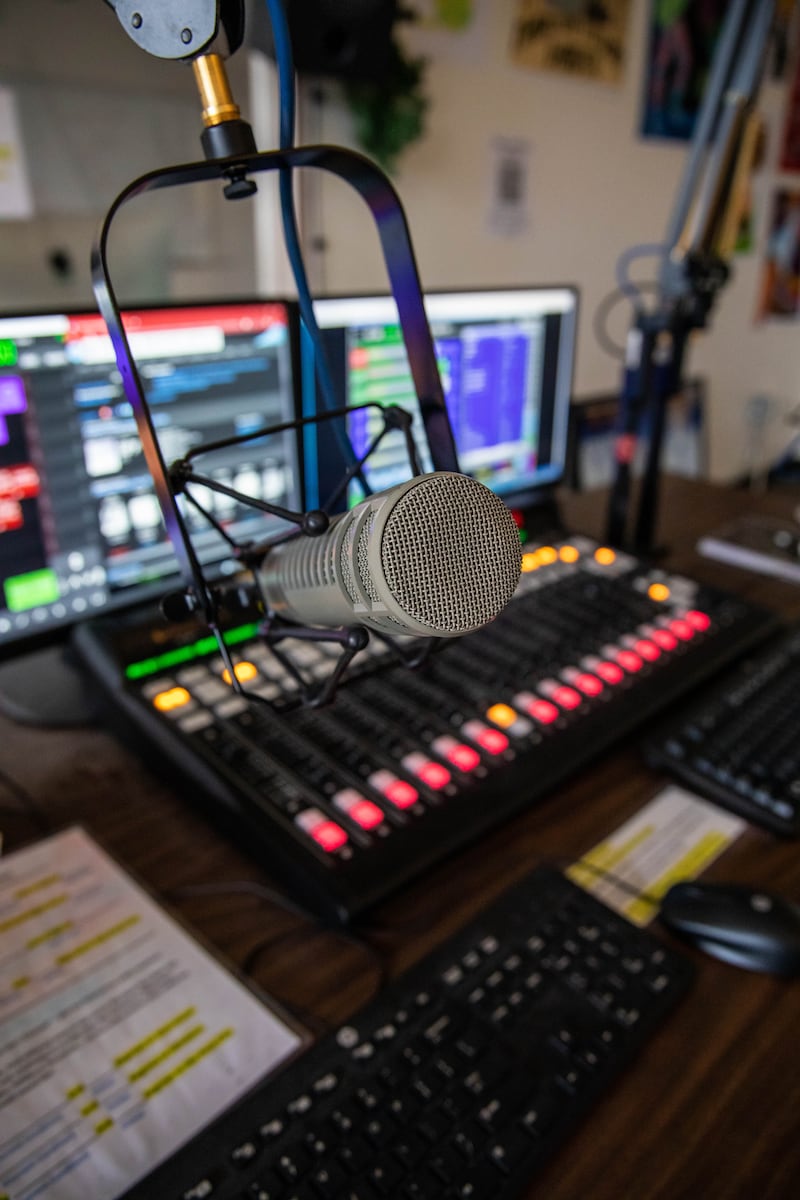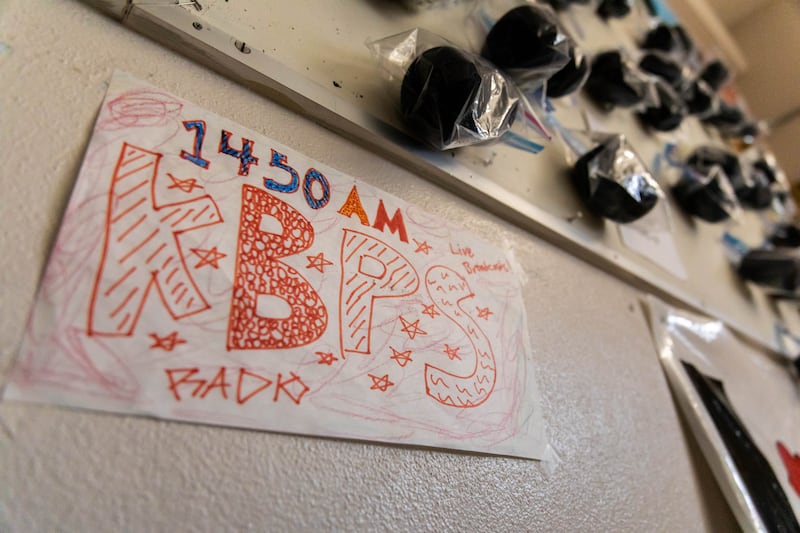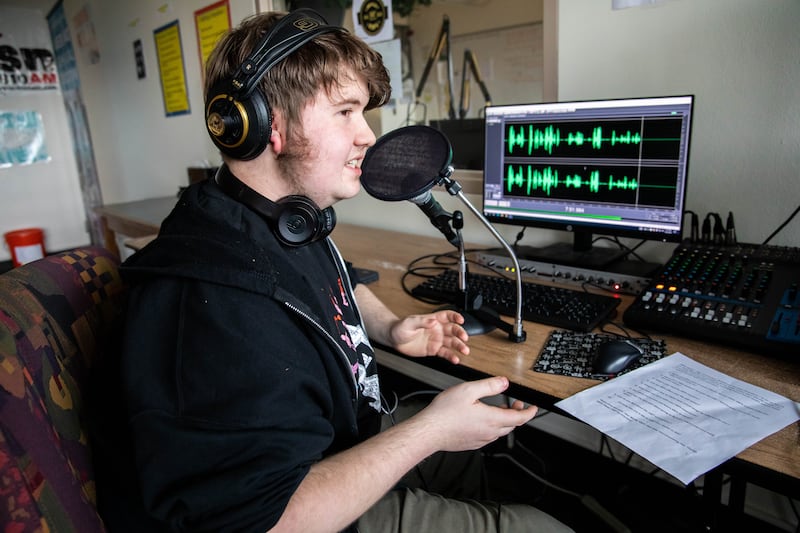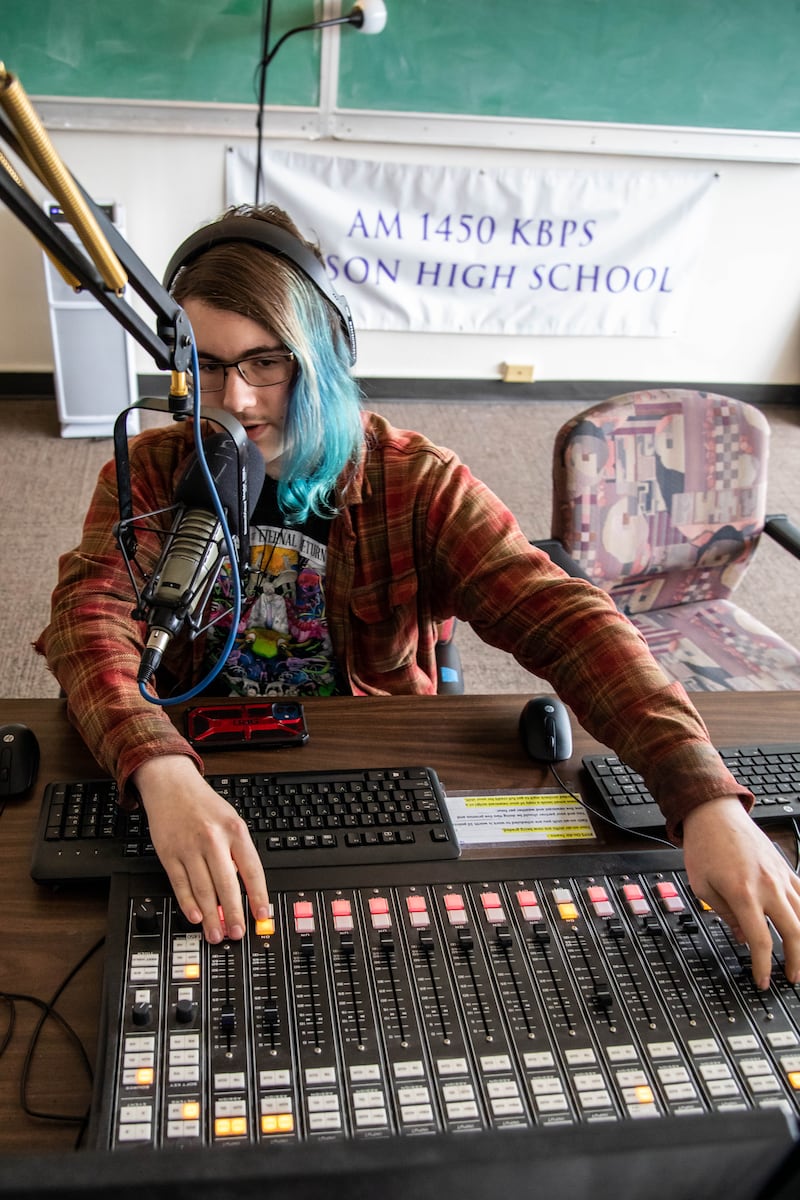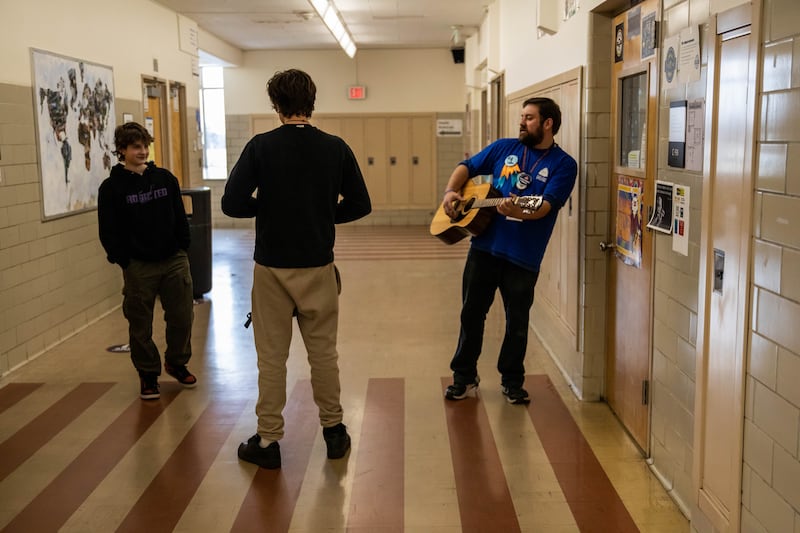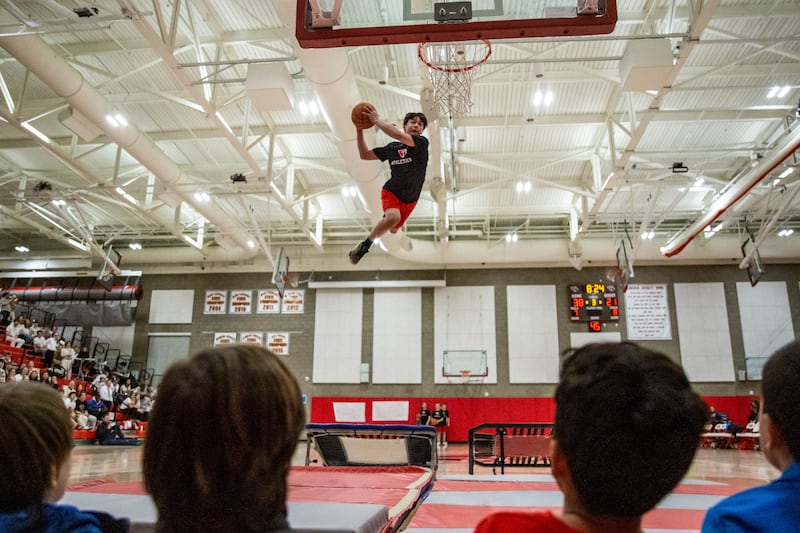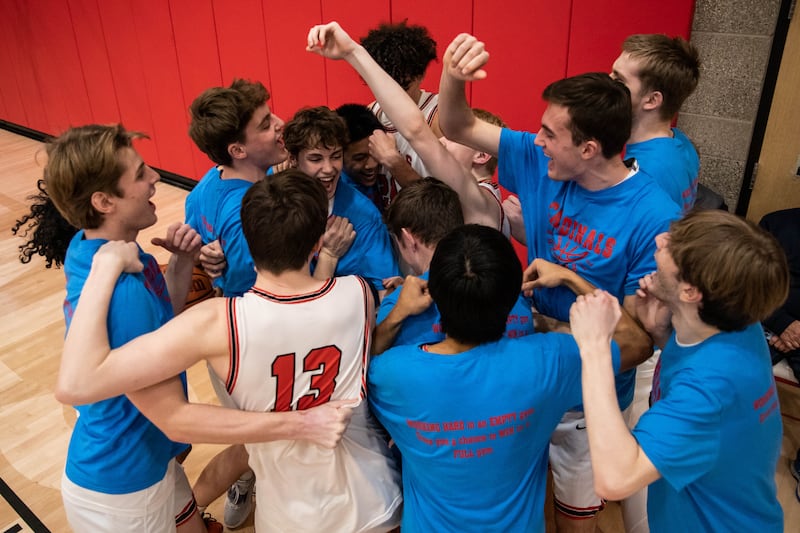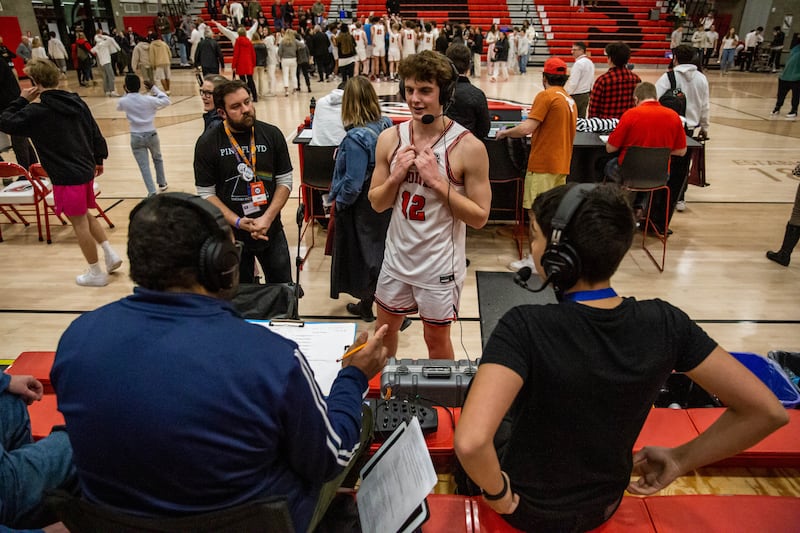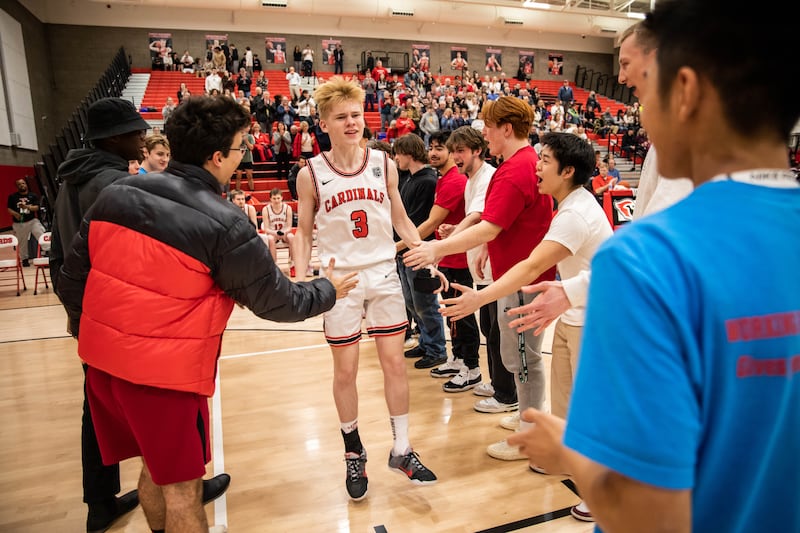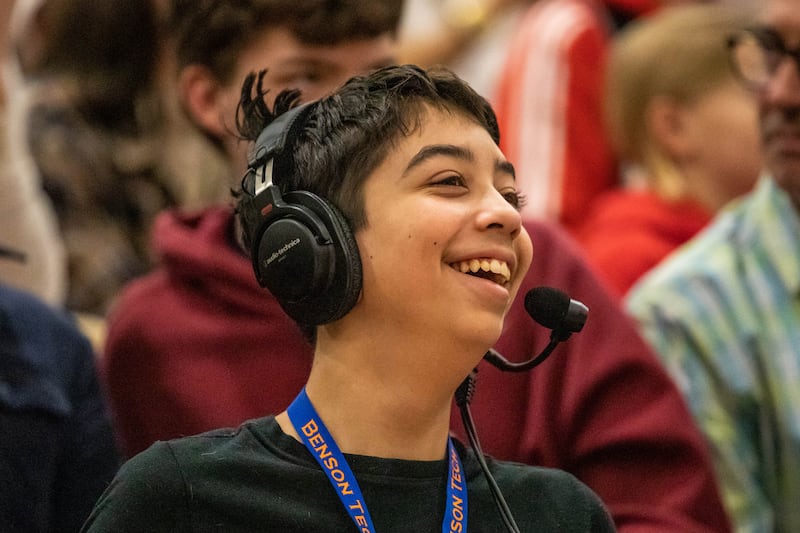The start of March Madness found the brand-new gym on the second story of Lincoln High School thrumming with activity.
The PA system blasted Meek Mill as the visiting David Douglas Scots took practice jumpers. Lincoln boys coach Heather Seely-Roberts strode the sideline in black boots, minutes from what she hoped would be a five-win run to a state title. The home team’s red Cardinal mascot vamped for the student section as the marching band launched into “Seven Nation Army.”
And in the third row of the west bleachers, Moto McChesney slipped a headset over his green flat cap and welcomed Portland to the game.
“I am so excited to be back at the playoffs,” he said. “I saw Lincoln walk in. They keep getting taller. Oh, wow, that’s really tall.”
It wasn’t quite Bill Schonely’s iconic greeting, “Good evening, basketball fans, wherever you may be,” but there’s time. McChesney is 15 years old.
This week, hoopers are the center of attention at Portland Public Schools, as the OSAA Basketball Championships feature athletes who dream of glory, scholarships and maybe an NIL deal. Less noticed are their fellow teens at Benson Polytechnic High School, who broadcast the games on a student radio station, KBPS AM 1450.
The death of longtime Trail Blazers broadcaster Schonely earlier this year was greeted by mourning across Portland, a reminder of how unifying it can be when the whole city listens to a voice on the airwaves. The next generation of sportscasters can be found a few notches up the dial. One night a week, and every night of the playoffs, Benson alum Sean-Louis Philipsen settles into the stands of a PPS gym and offers play-by-play for a varsity game, usually with a Benson student at his side for color commentary.
Those broadcasts are a tentpole of the programming on KBPS, a station that this month celebrates 100 years at Benson, the career and technical education high school perched above the Banfield Freeway in Northeast Portland.
When Portland voters in 2017 approved a $790 million property tax bond to overhaul Benson and three other crumbling schools (the same vote that got Lincoln its new gym), they were likely thinking about the automotive, electrical and building construction majors. But they were also funding a 1-kilowatt radio station that’s been on the air since 1923 and is training Portland’s next batch of drive-time DJs.
“It’s the second-oldest radio station in Portland,” says Jacob Patterson, broadcasting instructor at Benson. “It’s the oldest high school AM radio station in the nation. You can walk into just about any radio station or any TV station in Portland and there’s going to be some connection to KBPS.”
0 of 9
Station alumni include Aminé, Avatar actor Joel David Moore and Nike co-founder Phil Knight, who was a student sportscaster. Perhaps a greater testament to the station’s place in the city is how many of its graduates, including Philipsen and Patterson, come back to the studio on Northeast 15th Avenue to train more students.
Their protégés are headlined by McChesney, a precocious freshman. Lanky with a wide grin and an ever-present flat cap, he has a full plate at Benson: robotics club, bowling team, Civil Air Patrol. He started at KBPS with a show interviewing local magicians—because, yes, he also does magic.
“I’ve never been scared to get up in front of a group of people,” McChesney says. “I was given a headset and I started talking.”
Last week, WW joined McChesney and his colleagues as they broadcast the first round of the OSAA playoffs. We also spoke to three KBPS alumni about what the station means to Portland. Consider the following pages, and its photos of radio, a reminder of the little threads that hold this city together, reading the final scores into the rainy night.
Managing editor Aaron Mesh contributed reporting to this story.
The Studio
0 of 7
On Feb. 28, Scott Young, a Benson alumnus, sat in Control Room No. 2, the only studio still functioning as contractors rip apart the KBPS station. From a swivel chair, he controlled the KBPS broadcast of the first-round playoff game between the Liberty and Benson girls basketball teams. Philipsen and Patterson send their audio from the Benson gym via a portable Comrex machine—”I like to think of it as a super-high-powered walkie-talkie,” Patterson says—and Young uses the control board to broadcast it on the AM dial.
KBPS is a 1,000-watt station, puny by the standards of commercial stations, which often boast towers with 50 times that strength. But the KBPS signal can be heard for 35 miles in any direction—the full reach of the school district.
The Classroom
0 of 9
Nineteen Benson seniors major in radio. Each of them gets their own 90-minute show. “When the students are in the studio, they have complete creative control. They can play whatever they want to play,” Patterson says. “The new SZA that came out is really hot, apparently.” The rest of the music is programmed by station alumni, who spin one of the deepest and most eclectic playlists in the city. (On a recent morning, the Frozen anthem “Let It Go” was followed by Foreigner’s “Cold as Ice.”)
Most of this activity is now centered at shuttered Marshall High School in deep Southeast Portland, a kind of zombie campus where other schools take up residence while their bond-funded remodels are underway. Patterson says the one-two punch of pandemic and exile drained a lot of enthusiasm for KBPS, and he’s spent much of the past year building the station back up. “Marshall doesn’t feel real,” he says. “One of the best things about this [KBPS] building was it felt real. It was real. You walk into these real studios, they’re really soundproof, they’re really weighted doors. It was the complete experience.”
Students are scheduled to return to the Benson campus in fall 2024.
The Game
0 of 6
Lincoln’s March 1 win over David Douglas was dominant. By halftime, much of the attention had shifted to the Cardinals’ aerial team, which dunked basketballs after bouncing off trampolines. When the horn sounded on a 76-47 final, Philipsen and McChesney scrambled down to the scorer’s table to interview the star player: Moroni Seely-Roberts, the coach’s son.
For Patterson, the most gratifying part of the work is seeing students like McChesney find a voice—perhaps a little more literally than that coming-of-age phrase usually connotes. “It’s one of the coolest things I’ve ever got to witness in my life,” Patterson says. “I know that not all the students will go on to do radio. But everyone’s going to have to do some sort of communication.”
McChesney and Philipsen signed off for the night. “David Douglas had the energy, they had the motivation,” McChesney said. “But unfortunately, they just didn’t have that height. When you have to get hit at full speed by someone a foot taller than you, it makes it hard.” With that, McChesney wrapped up the broadcast. He walked downstairs to wait for a ride home from his mom.
The Alums
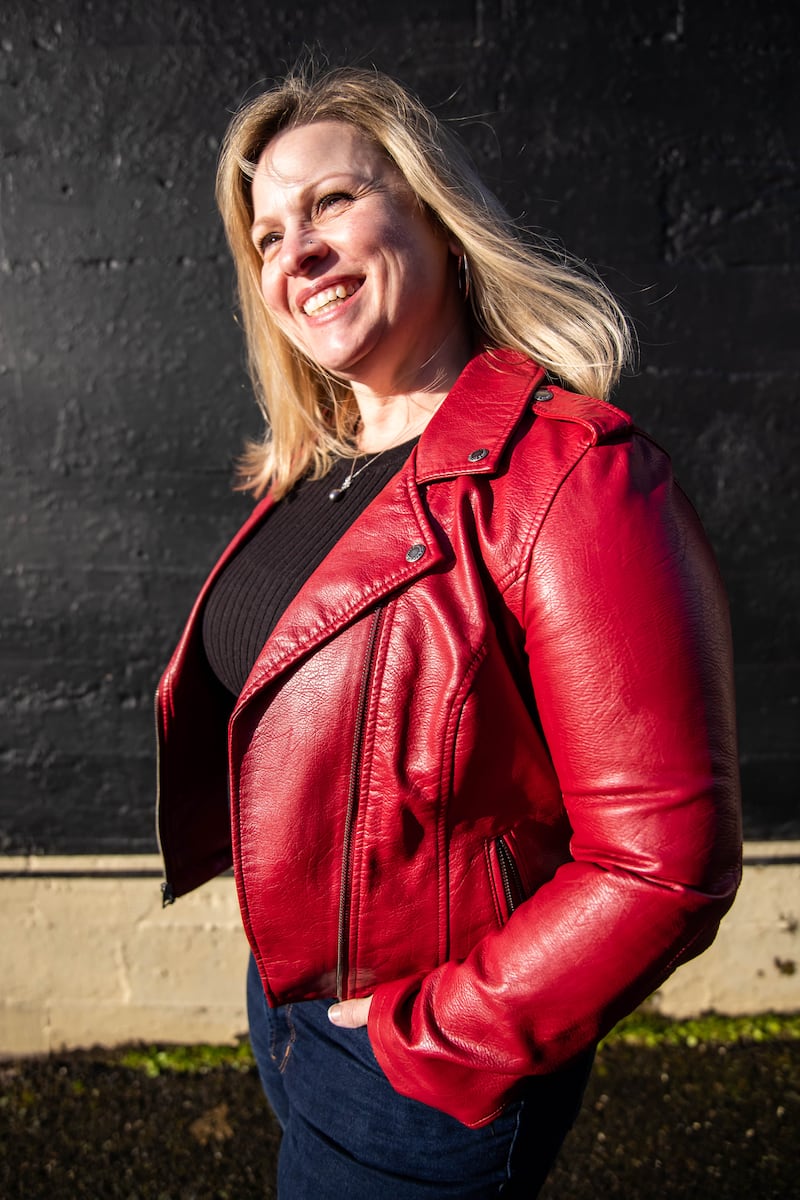
Leslie Pfau
Benson Polytechnic High School Class of 1986; regional marketing operations manager, Comcast
“I was the first female DJ they ever had at KBPS. It wasn’t like you were at school. It was like you were at work. Dr. Patricia Swenson was very particular about how her station was run. I remember one night I was on air and something went wrong in between the breaks. I didn’t have my mic off, and I dropped the F-bomb. I thought, nobody’s probably listening. Oh, she heard. She called: ‘That’s not something we want to do.’ She was very maternal about it. You’re in a professional environment…most of the time. But you still are in high school. You’re still kids.”
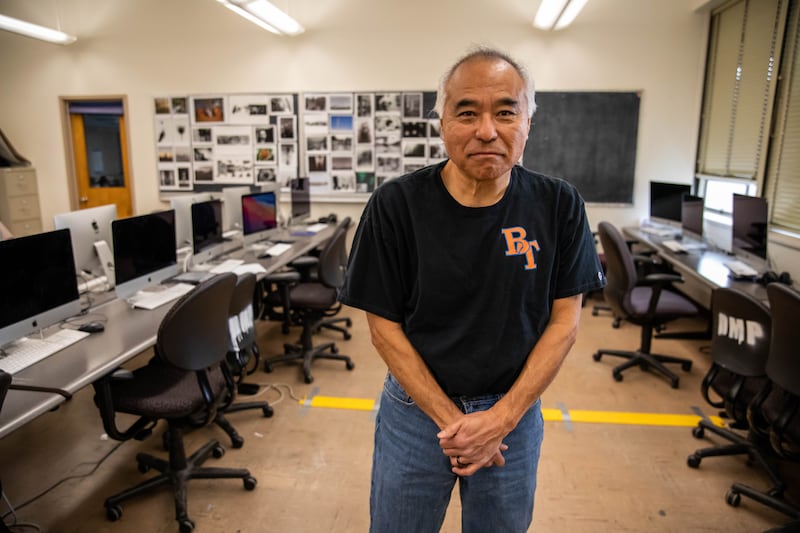
Steve Naganuma
Benson Polytechnic High School Class of 1975; longtime DJ at 19 radio stations; KBPS broadcasting instructor, 1997-2021
“Sometimes students will say: ‘So, Aminé was your student. Did you teach him how to rap?’ He knew how to rap on his own, but he learned how to work the audio equipment that we had, and he kind of customized that. He wasn’t super interested in being a DJ or going into the broadcast end, but I think what intrigued him is, hey, this audio equipment can record my voice and I can play an instrumental rap track below it. That’s where he got his start, at least on the technical recording end.
“Students of the broadcasting program learn to be audio content creators. The audio that they are creating could go on an AM or FM radio station, could go on a TV station, could be in a movie soundtrack, could be a rap song.”
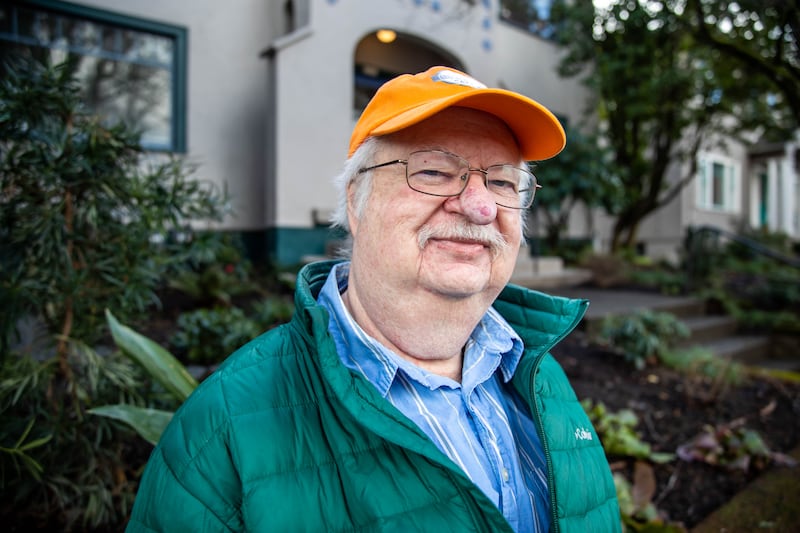
Kevin Flink
Wilson High School Class of 1971; student sportscaster, 1968-71; KBPS broadcasting teacher, 1975-2007; now public address announcer for the Portland Timbers
“Any job out there needs communications. Radio is my hook. It’s fun, they get to play music, and they learn how to communicate. If we’re feeding you this—how to talk, how to give information, how to receive it, how to use it—why don’t we do it in the most fun way possible? And what is more fun than getting to play on the radio?”
LISTEN: KBPS airs on AM 1450 and online at kbps.am. The station’s 100th anniversary celebration includes a broadcast at 9 am Thursday, March 23. Broadcasts of OSAA playoff basketball games continue this week.
